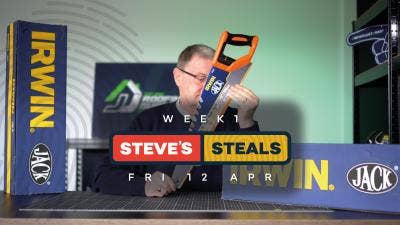Roofing supplies safety wear
Safety wear is an essential part of every roofer's toolkit. Working on a roof can be hazardous profession, so only those who are skilled at the job should work on a roof.
Just because you are wearing a hi-vis jacket, doesn't mean that you don't need other safety wear
These people are trained at the best methods to access the roof and also how best to protect themselves from a fall or other potential accidents.
Some essential safety wear that a roofer may need includes:
€¢ Safety harnesses €“ Safety harnesses can be clipped to a secure structure and should always be worn when there is a potential for a falling accident on site.
€¢ Knees pads €“ Many roofers will kneel down for long periods of time, which can cause damage to the knees. If they use knee pads this problem can be eliminated
€¢ Dust masks €“ Dusk masks should always be worn, especially when ripping off an old roof as the dust created can cause the worker significant respiratory problems.
€¢ Eyeshields €“ Wearing eyeshields or goggles when doing any demolition work is really important. The goggles protect the wearer's eyes from dust and debris particles.
€¢ Safety gloves €“ These should be worn by anyone who is at risk of injuring themselves while working on a roof. Handling tiles and timber can cause injuries to the hands which can be prevented by wearing gloves.
The main obvious health and safety problem comes from the fact that roofers inherently work high off the ground, frequently on a surface that is both pitched and relatively smooth and are at a reasonably high risk of falling off.
A second problem also results from the fact that roofers work high up. However this concern is for the workers and others who are on the ground level and may be at risk if the tiles, slates or tools are not secured properly and fall to the ground. The tools and materials are heavy and when falling from two or more storeys can be incredibly dangerous.
The third type of problem is that some of the materials that a roofer works with are inherently dangerous. For flat roofing, old style pour-and-roll bitumen requires the transportation of buckets of melted pitch up onto the roof and burns are often seen as simply part of the job. More modern torch-on bitumenous felt is a lot safer but still requires the use of a powerful gas torch to perform the spot-heating.
As well as some high quality safety wear, common sense is the best friend a roofer has.
Our Top Videos.


How to install a Velux Integra Electric Roof Window (5 Parts)
In this five-part guide, we take you through the full installation of a Velux GGU Centre Pivot Integra Roof Window onto an...


How to install a Duratech Centre-Pivot Pine Roof Window
Once you begin unpackaging the window, you’ll find in the box the brackets, the handle and the fixings. And there will also be some instructions...
Ideas & Advice
How-tos, tutorials and videos


How and why to use or snap a chalk line
Chalk lines are the fastest way to mark straight guidelines on flat surfaces. They are used extensively in the building and construction industry to speedily and accurately ‘draw’ straight lines between two points. Chalk lines are inexpensive tools...


Skylight Blinds: A Guide To The Different Types
Like many household product, blinds for skylight windows come in all shapes, sizes, and materials. Some are designed with a tangible purpose in mind, while others are more for show. One thing’s for sure - buying any type of skylight blind...








